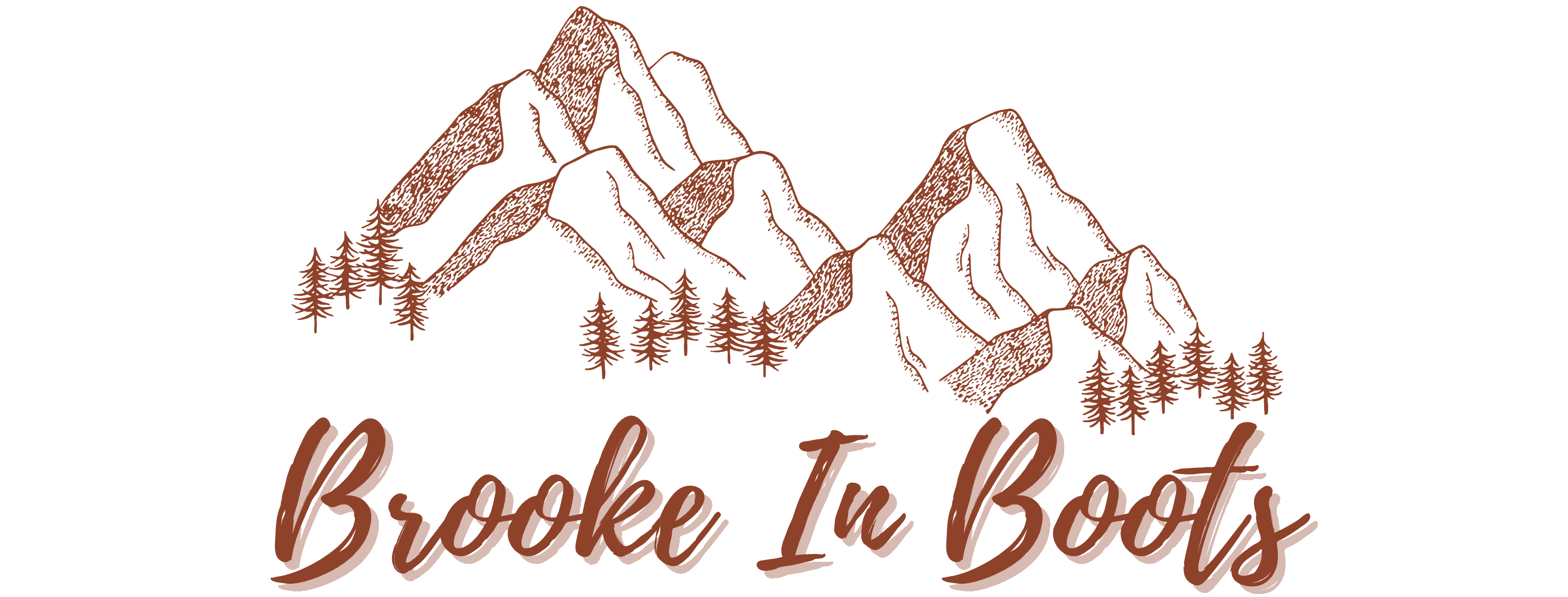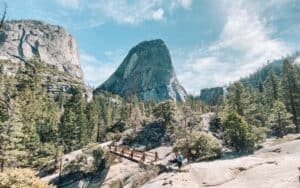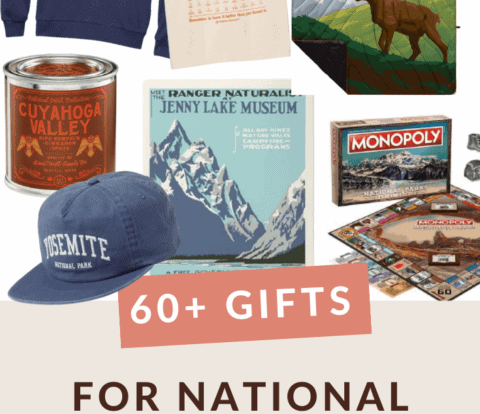
Wondering how to make the most of a one day in Zion National Park? If have limited time to explore this stunning National Park, you’ll want to prioritize must-see spots and make the most of every moment. In this guide, I share my action-packed itinerary so you can experience the highlights of Zion in just one day. From thrilling hikes to scenic drives, this guide has got you covered!
Disclosure: This page may contain sponsored content or affiliate links, including Amazon links, where I earn a small commission from any purchase – at no extra cost to you. This commission helps keep Brooke In Boots up and running. As always, all opinions are 100% honest and my own!
What to See in Zion National Park (Even If You Only Have 1 Day!)
If you only have one day to spend in Zion National Park, here are my favorite must-see spots I recommend:
1. Get up early and grab some coffee and breakfast to-go in Springdale
2. Hike the Narrows or Angel’s Landing
3. Grab Lunch at and explore the Zion Visitor Center
4. Drive the scenic Zion-Mt. Carmel Highway to Checkerboard Mesa
5. Hike to Zion Canyon Overlook for Sunset
This guide covers all of these stops in tons of detail, below, plus some more suggestions for how to spend an absolutely epic one day in Zion. I’ve also included important things to to know about planning your trip to Zion National Park, below.
Want to spend more time in Zion? Check out this ultimate Zion planning post, here.
Planning a trip to Zion National Park? The downloadable Zion Itinerary Guide has your perfect 1, 2, or 3 day Zion National Park trip completely planned for you! With over 20 pages of detailed hiking guides, printable daily itineraries, lodging and dining suggestions and more, you can spend less time planning and more time making epic memories! Check it out, here.

Disclosure: This page may contain affiliate links where I earn a small commission from any purchase – at no extra cost to you. This commission helps keep Brooke In Boots up and running. As always, all opinions are 100% honest and my own!
Zion National Park is Indigenous Land
Zion National Park was home to the Ancestral Pueblo people until approximately 1300 AD/CE. Ancestral Puebloan rock houses and petroglyph carvings are found throughout the Park and the Southwest. The Southern Paiute called Zion Valley home when Mormon settlers began arriving to the area in 1858. The Paiute Indian Tribe of Utah continues to live in the Zion and Bryce Canyon area to this day. Please respect and honor their land and ancestors while you explore Zion.
How to Plan a Trip to Zion National Park
Before jumping into your Zion one day itinerary in more detail, there are a couple of important things to know about planning a trip to Zion National Park.
Zion is located in southwestern Utah, and is the most popular of Utah’s “Mighty Five” National Parks.
Zion National Park is divided into two main districts: Zion Canyon and the Kolob Canyons. Most visitors will spend their trip in the Zion Canyon area. The Kolob Canyons area is not accessible from Zion Canyon. It takes approximately 1 hour to drive to Zion Canyon to Kolob Canyons.
If you only have one day in Zion, I recommend you don’t waste your time driving between Zion Canyon and Kolob Canyons. Instead, I suggest you maximize your time in Zion Canyon and the adjacent scenic drive, Zion-Mt. Carmel highway!
Getting to Zion National Park
Zion National Park is not easily accessible by public transportation. That means you’ll more than likely drive to the Park, or fly into a nearby airport and rent a car. The roads in and around Zion are well maintained, and no off-road or 4×4 driving is required.
This chart shows the nearest airports to Zion National Park:
| Airport | Distance to Zion Canyon Visitor Center |
|---|---|
| St. George Regional Airport (SGU) | 47 mi / 1 Hour |
| Cedar City Regional Airport (CDC) | 60 mi / 1 Hour |
| Las Vegas Harry Reid International Airport (LAS)* | 172 mi / 3 Hours |
| Salt Lake City International Airport (SLC) | 315 mi / 5 Hours |
The best airport to get to Zion is Las Vegas Harry Reid International Airpot. In my experience, LAS is the best combination of inexpensive flights from major airlines and a reasonable driving distance from the Park.
This map shows the nearest roads, major towns, and other Parks near Zion National Park.

Learn more about the closest airports, driving directions, and more in my in-depth guide, here: Closest Airport To Zion National Park: How To Get To Utah’s Best National Park
Is Zion National Park Dog Friendly?
Unfortunately, I recommend leaving your furry friend at home when visiting Zion.
Dogs are only permitted on the paved Pa’rus Trail. Toxic algae blooms in the Virgin River are toxic to dogs, and have resulted in pet fatalities. Do not let any pets enter or drink from the Virgin River.
Entrance Fees & Reservations in Zion
Zion charges an entrance fee to all visitors entering Zion National Park. There are no reservations or day-use passes required to enter Zion National Park.
Entrance Fees in Zion: $35 per vehicle, or $20 per person if entering as a pedestrian or via the Springdale Shuttle. (More about Shuttles in ‘Getting Around Zion National Park’ below).
Traveling to more than 2 National Parks or National Forests this year? Purchase an America the Beautiful National Parks Pass for $80, which covers entrance fees at all National Parks and NPS managed sites.
You won’t need a special reservation to enter Zion (unlike Arches, Rocky Mountain, or Glacier) but you WILL need a reserved permit to do certain hikes, including Angel’s Landing, any backcountry canyoneering routes (including Narrows top-down and the Subway). Read more about all of the permits and reservations in Zion, here.
Angel’s Landing Permits
In order to reduce crowding on the dangerous chains scramble section of the trail, Zion National Park started requiring permits for all hikers traveling all the way to Angel’s Landing, as of April 1, 2022.
You can learn more about every type of permit required in Zion National Park, here.
A permit is required for all hikers traveling beyond “Scout’s Lookout” to Angel’s Landing (aka all “chains” sections). A permit is NOT required to visit Scout’s Lookout (worth the hike even if you don’t have a permit!) or the West Rim Trail.
This map from Zion National Park shows which sections of the Angel’s Landing trail require a permit:

Angel’s Landing permits are issued by 2 different lotteries.
Most lottery permits will be issued through quarterly preseason lotteries. A select number of permits will be issued in daily day-before lotteries.
Angel’s Landing Quarterly Permit Lottery
Most Angel’s Landing permits are issued by the Quarterly Permit lottery. The Quarterly lottery is held 4 times a year, meaning you’ll need to apply for these permits well in advance of your trip.
This chart shows the quarterly permit lottery dates for 2024:
| Hiking Dates | Lottery Application Dates | Lottery Results Announcement |
|---|---|---|
| Dec 1, 2023 – Feb 29, 2024 | Oct 1 – Oct 20, 2023 | Oct 25, 2023 |
| Mar 1 – May 31, 2024 | Jan 1 – Jan 20, 2024 | Jan 25, 2024 |
| Jun 1 – Aug 31, 2024 | Apr 1 – Apr 20, 2024 | Apr 25, 2024 |
| Sep 1 – Nov 31, 2024 | Jul 1 – Jul 20, 2024 | Jul 25, 2024 |
| December 1 to February 28, 2025 | Oct 1 – Oct 20, 2024 | Oct 25, 2024 |
Each Quarterly lottery is open for 20 days. You can apply at any time during that window.
To apply to the Angel’s Landing Quarterly Permit Lottery, login in to recreation.gov, and search for Zion National Park. Select the open lottery that covers your hopeful hiking dates. There is a $6 fee for applying, and your application fee covers up to 6 people in your hiking party.
You will get to pick seven ranked days and times or windows of days and times you want to hike.
An email will be sent to you 5 days after the lottery closes letting you know whether or not you received a permit. Winners will be charged $3 per hiker, refundable up to 2 days before your permit date.
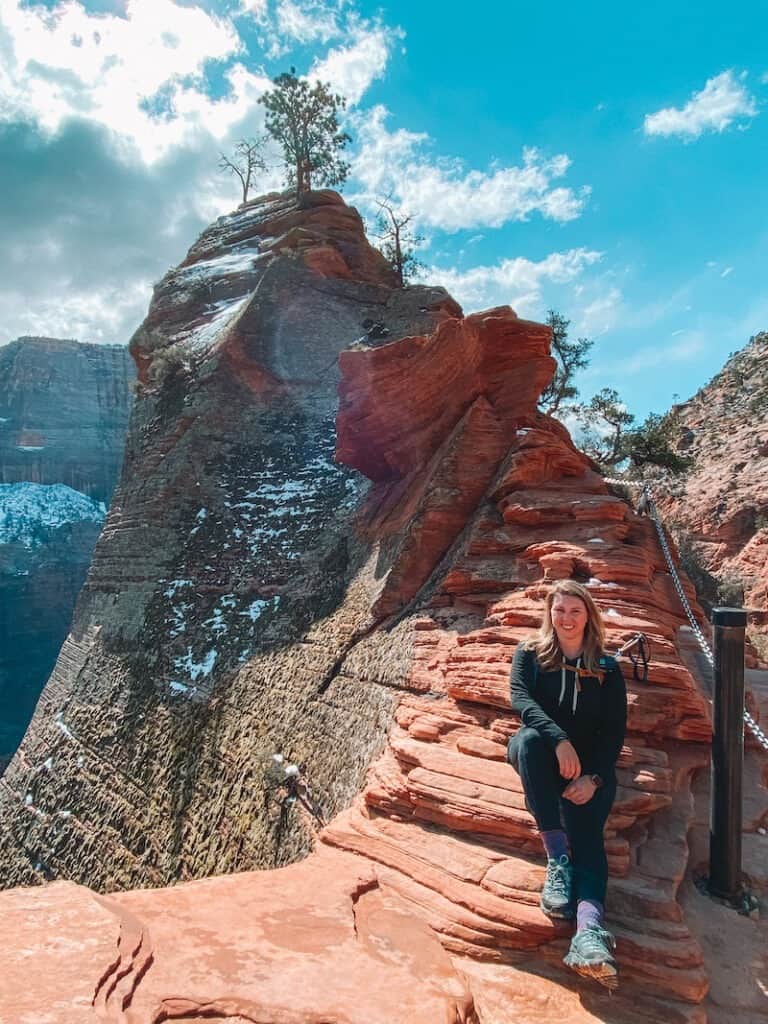
Angel’s Landing Day-Before Lottery
Didn’t win the Quarterly Lottery? Or maybe you’re trying to plan a last minute trip to Zion? There’s still a chance to climb Angel’s Landing using the Day-Before Lottery.
Day-before lottery applicants should apply on recration.gov between 12:01AM and and 3PM the day before they intend to hike.
Applicants will be notified by email by 4PM, letting them know whether or not they received a permit.
Do I Need a Permit for the Narrows?
Probably not. Hiking and canyoneering permits in Zion are super-confusing at best. Adding to the confusion is that there are multiple routes through the Zion Narrows, but only some require special permits.
So, here’s the quick and dirty on permits for the Narrows:
There are two routes through the Narrows, called “bottom-up” and “top-down.” Most visitors will use the bottom-up Narrows route, which does NOT require any permit or reservation. The bottom-up route is the uber-popular trail that leaves from the Temple of Sinawava and Riverside Walk trail. This is a day-hiking only (no camping) route that is 9 mile out-and-back route and takes about 5 hours at most.
It is also possible to hike the entire 16 mile Narrows canyon via the “top-down” route, which leaves from Chamberlin Ranch. This route requires a canyoneering permit. Many hikers will camp overnight inside the canyon and complete the route over 2 days, although a long day hike is possible. Read more about hiking the Narrows, top-down, here.

Using the Zion Shuttle System
Zion is one of the most visited National Parks in the United States. In order to deal with crowds, the Park operates two awesome FREE shuttles to get visitors around and into the Park.

The Zion Canyon Shuttle makes stops up and down Zion Canyon Scenic drive (aka the only road through Zion Canyon) and is the BEST way to get around Zion National Park.
Zion Canyon Scenic Drive is closed to private cars when the Zion Canyon Shuttle is running.
The shuttle typically operates daily from March through November, as well as during the December holidays. That means you’ll likely be using the Shuttle when visiting most of your stops on this Zion National Park itinerary.
Guests of the Zion Lodge can drive on Zion Canyon Scenic Drive in order to access the Lodge.
The Zion Canyon Shuttle connects the Zion National Park Visitor Center with trailheads and sights along the Zion Canyon Scenic Drive. Most visitors board at the Visitor Center. Guests staying at the Zion Lodge can also board the bus to go up canyon from the Zion Lodge Shuttle Stop (#5).
To board the shuttle, park at the visitor center (arrive early!) or take the free Sprindgale Shuttle.
Springdale Shuttle
The Springdale Shuttle runs through the town of Springdale and provides service to Zion’s pedestrian and bike entrance, a short walk from the Zion Canyon Visitor Center.
This Shuttle is free to use and runs April – October.
The Springdale line makes 9 stops along Zion Park Blvd (Utah Scenic Byway 9) throughout the town of Springdale. Most stops are located at popular hotels and restaurants. If you are within walking distance of the main road through town, Zion Park Blvd, chances are there is a Shuttle stop within easy walking distance.
Bike Riding and eBike Rentals in Zion
Want to skip the crowded shuttle line? During busy times wait times to board the shuttle from the Zion Visitor Center can be over an hour! During my last visit to Zion in April, I heard that visitors were waiting over 2 hours to get on the shuttle bus!
The solution? Rent an ebike! Bicycles and Class 1 eBikes (aka pedal assist bikes) are permitted on all paved roads and the Pa’rus Trail inside Zion National Park.
On an eBike you’ll be able to cruise from Springdale right into Zion without waiting for the Shuttle Line . To enter the park, you’ll use the Pedestrian / Bicycle Entrance next to Zion Canyon Brew Pub and Zion Outfitters.
It’s 8 miles from the Pedestrian Entrance to the end of Zion Canyon Scenic Drive at the Temple of Sinawava (aka the entrance to the Narrows hike). All shuttle stops and major trailheads have bike racks, so you can get off and explore at your own pace. Keep an eye out for bighorn sheep, deer, and the elusive (and very endangered) California Condor – we saw 4 on our bike trip!
There are tons of eBike and regular bicycle rentals throughout Springdale. I used Greater Zion eBikes on our visit and loved them. If you’ve never used an eBike before (don’t worry, neither had I), it’s not as scary as it looks. Greater Zion eBikes will walk you through everything you need to know, plus help you plan your route through Zion.
Learn more about biking in Zion, here.
Check Out These Blog Posts for More Resources on Visiting Zion & Bryce Canyon
Epic Zion National Park Itinerary Guide
7 Easy Family-Friendly Hikes in Zion National Park
One Epic Day in Bryce Canyon National Park
Zion Permits & Reservations: Everything You Need to Know
Closest Airports to Bryce Canyon & How to Get to There
Where to Stay in Zion
Staying overnight in Zion? There are plenty of options to consider if you’re staying the night before or after visiting Zion.
Where to Stay Inside Zion National Park
In my experience, staying at the Zion Lodge inside the Park is the best option if you really want to make the most of a short visit to Zion. You don’t have to battle long lines at the entrance station, and you can board the Zion Canyon Shuttle directly from the Lodge.
The Zion Lodge, like most National Park lodges, is pretty rustic but in a superb location. Rooms are comfortable and conveniently located. Wi-fi and cell service are both unreliable at the Lodge in my experience, so plan on unplugging! The Red Rock dining room at the Lodge is open year round breakfast – dinner. The seasonal Castle Dome Café offers to-go food for breakfast and lunch.
Book your stay at the Zion Lodge, here.

There are two established campgrounds inside Zion Canyon: the Watchman Campground (located right next to the Visitor Center, reservations required, available 6 months in advance), and the South Campground (located on the Virgin River, reservations available 2 weeks in advance.).
There are tent and RV spots available at both campgrounds. All campgrounds include drinking water, fire pits, flush toilets, and dump stations.
There are no showers or laundry services inside Zion. Both services can be found at retailers in Springdale. Book Zion campgrounds on Recreation.gov, here.
Where to Stay Outside Zion
If you only have one day in Zion (and you aren’t staying inside the Park), I suggest staying in the town of Springdale, which is located directly outside the Zion Canyon park entrance.
In Springdale, there are dozens of chain and independent hotels. Prices range from “budget” to luxury – but even the budget options may still cost a pretty penny in peak seasons.
The Springhill Suites by Marriott (Shuttle Stop #6) has particularly stunning views of the red rock formations, plus a pool and free breakfast. Other options include, The Best Western Plus (2.5 stars, free wifi, pools & breakfast) the Cliffrose Inn & Suites (4 Star luxury), or the budget-minded Bumbleberry Inn in downtown Springdale.

How to Spend One Epic Day in Zion National Park
Consider this one day Zion National Park itinerary for an action-packed introduction to this Park.
Sunrise Breakfast and Coffee in Springdale
Start your one day in Zion bright and early! Grab coffee and some quick breakfast at your hotel or check out one of the breakfast joints in Springdale.
I try to save money (and time) while traveling by drinking the free hotel coffee, instant coffee like Alpine Start, and buying milk and cereal from the local market. But I’ve heard amazing things about Deep Creek Coffee Company (opens at 6am & can order ahead on their website and skip the line).
Park or Shuttle to the Zion Visitor Center
After grabbing your coffee and breakfast, head inside the Park to the Zion Canyon Visitor Center. Park at the large lot behind the Visitor Center, or take the Springdale Shuttle, which will drop you off a short walk from the Visitor Center.
From here, take the first available Zion Canyon Shuttle to your first big adventure inside Zion, the Narrows or Angel’s Landing!
Hike Angels Landing or The Narrows

The two most famous hikes in Zion are Angel’s Landing and the Narrows. Both of these are strenuous, lengthy hikes, so you’ll probably only have time for one or the other.
If you ‘re a fit and experienced hiker and really want to do both in one day, I suggest starting early at Angel’s Landing, then refueling for lunch and heading to the Narrows in the afternoon.
Wondering which to hike to pick? These two hikes are the most famous things to do in Zion National Park, but the experiences couldn’t be more different.
If you only have one day in Zion National Park, I recommend the Narrows. Not only is hiking upriver a totally unique experience, you’ll avoid having to get a permit and the stomach-churning fear of Angel’s Landing.
Here’s a quick rundown of each hike, and what you need to know:
Hiking Angel’s Landing
Angel’s Landing is a 4.3 mile, 1,850′ gain strenuous hike. This trail is commonly called “The Most Dangerous Hike in America.”
After ascending 21 steep switchbacks to Scout’s Lookout, hikers must climb the final 0.5 miles over a narrow ridge with 1000’+ cliff drops on either side. At times the trail is only a few feet wide and requires the use of anchored chains to climb up and down.

Make no mistake, this is NOT the hike for you if you have any fear of heights, and fatalities from falling do occur.
When we last attempted Angel’s Landing, we turned back about .1 mile into the chains section due to ice. Brave hikers are rewarded with panoramic views of Zion Canyon below.
Don’t forget, to hike all the way to Angel’s Landing (past Scout’s Lookout) you will need a special permit issued by lottery. Learn more about the Angel’s Landing permits, here. The Angel’s Landing trail leaves from The Grotto, shuttle stop #6.
Hiking the Narrows
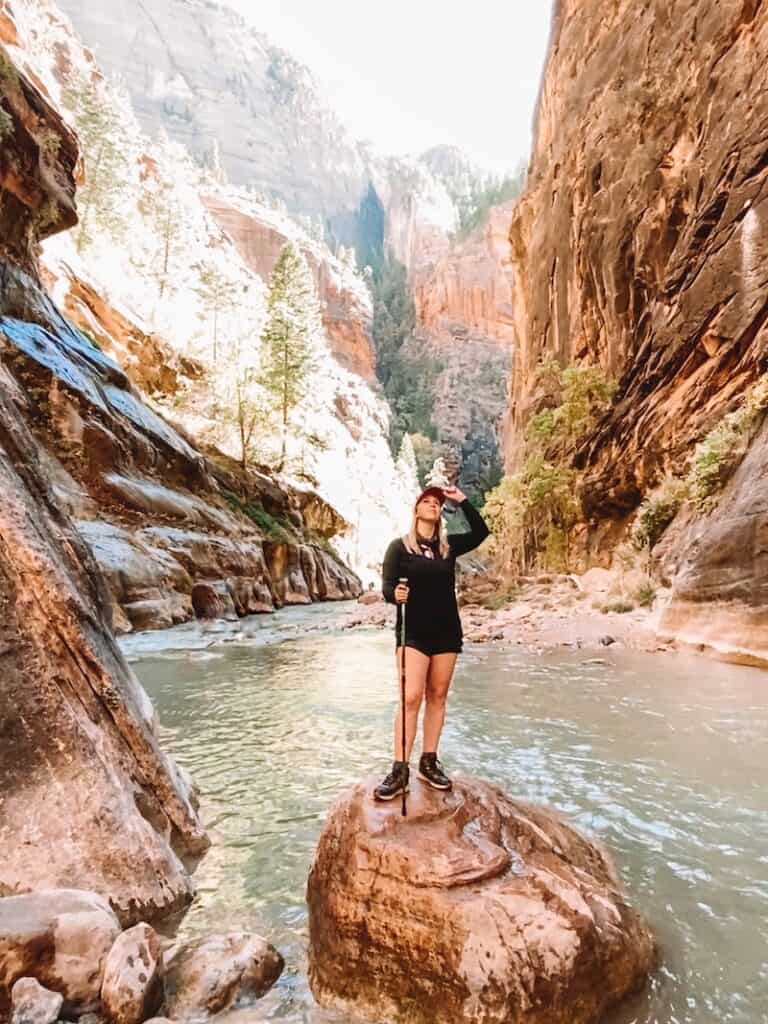
Get ready for a hiking adventure unlike any other.
The Narrows is named for the narrow slot canyon that forms in the far northern end of Zion Canyon. Hikers can explore up to 4.5 miles upstream in the canyon before turning around. This trail is popular with kids and families, but be warned – you will get wet!
Depending on the season and recent weather conditions the river may come up to your ankles or, in some sections, up to your chest.
To hike this route, walk the maintained Riverside Walk trail(Shuttle Stop #7) until you arrive at the river.
From here, there is no trail, just walk in the river as far as you’d like before turning around! There is no “destination” on this hike, so don’t feel like you have to make it all the way to Big Springs. Common turnaround points are:
- Mystery Canyon Falls (mile 1.2)
- Orderville Junction (mile 2.3)
- Wall Street (mile 3.7) This is a scenic turnaround spot!
- Big Springs (mile 4.5) Day hikers are not permitted past here.
I’ve hike sections of the Narrows on two different trips to Zion, and its still one of my favorite National Park hikes of all time!
Do not ever drink the water or submerge your head in the river. The Virgin River has experienced high-levels of cyanobacteria, a toxic algae, in recent years. Learn more, here.
What Gear Do I Need for Hiking The Narrows?
You WILL get wet on this hike. Depending on conditions and how far you hike, you may be wading through water up to your waist.
Wear moisture-wicking layers you don’t mind taking a swim in (not jeans or cotton), and don’t forget to bring a warm layer jacket – it gets chilly in the shaded canyon, even in summer. For shoes, it’s best to choose sturdy, closed-toed shoes with a good grip like hiking boots, trail runners, or canyoneering boots. Some hikers opt to wear closed-toe water sandals, but the riverbed is full of small sharp rocks and slippery boulders, so I was glad for the stability and production of real shoes.
Trekking poles will help you keep your balance, and a dry bag will keep your electronics, snacks, and warm layers safe if you take a fall or have to wade through high water.
In colder temps, you may need to wear waterproof pants, or dry suits to protect yourself from the cold water temperatures.
Waterproof gear can be rented from outfitters in Springdale like Zion Outfitter.
Lunch at the Zion Lodge or Springdale
After finishing your hike, return on the shuttle and enjoy lunch in Springdale, bring a packed a picnic lunch to enjoy at the visitor center, or grab a burger from the Cafe at Zion Lodge.
If you parked your car in Springdale and took the Springdale shuttle to the Park, now is a good time to head back into town.
Grab some lunch at one of the many cafes and restaurants in the area. Some local favorites are: Oscar’s Cafe (Tex Mex, lunch and dinner), Cafe Soliel (breakfast and lunch), Spotted Dog (American, lunch and dinner) or the Zion Pizza and Noodle Co (dinner only).
Once you’ve rested and refueled, its time to hit the road on your next stop!
Zion-Mt. Carmel Highway

After lunch, explore the historic and scenic Zion-Mt. Carmel highway.
The Zion-Mt. Carmel Highway connects Zion Canyon with Bryce Canyon National Park and the Grand Canyon North Rim via Highway 89. To access the highway, enter the Park from Springdale and follow the main road ( St Rte 9 / Zion Park Blvd) to Canyon Junction Bridge and keep right.
Spend a few hours exploring this magnificent scenic drive, with views of Pine Creek Canyon and Zion’s famous sandstone rock formations.
Along the drive, stop and explore the overlooks and short hikes like Grand Arch (2.5 miles from Canyon Junction), the historic Zion-Mt. Carmel Tunnel (3 miles from Junction) and Checkerboard Mesa (9.5 miles from Junction).

The highway eventually exits the Park, but Checkerboard Mesa is a good turnaround spot. Keep an eye out for the bighorn sheep that cling to the cliffs like mountain climbers here! (I’ve never been lucky enough to spot them, but everyone else swears they’re there….)
Hike the Zion Canyon Overlook Trail
Finally, hike the short but super-rewarding Canyon Overlook trail for panoramic views of Zion Canyon as the sun sets on your one day in Zion National Park itinerary.
Parking for this hike is located on the Zion-Mt. Carmel highway, immediately after exiting the Zion-Mt. Carmel tunnel, 4.7 miles from Canyon Junction.

This 1 mile out and back trail is mostly flat and easy, with some steep sandy stairs at the beginning. Along the way, you’ll wind through Pine Creek Canyon (watch your step, there are some steep drop offs here, but there are plenty of railings in narrow sections). After 0.5 miles the trail arrives at the Overlook with magnificent views of Zion Canyon.
Return to your car and Springdale for dinner and toast to your one epic day in Zion National Park!
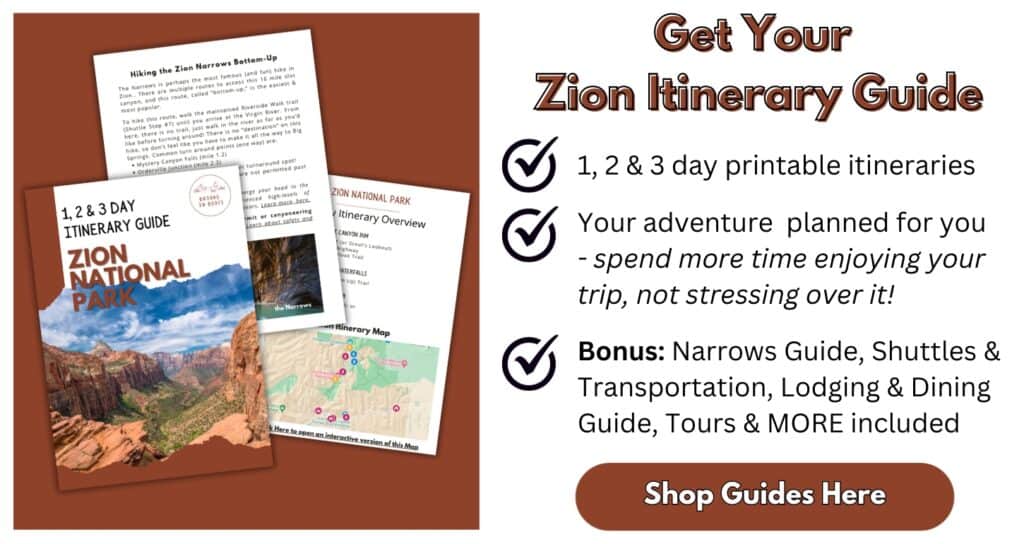
Tips for Spending One Day in Zion National Park
If you only have one day to spend in Zion, you’ll really want to make the most of every moment. Here are a few tips I’ve learned from my visits to Zion over the years.
First, start early. Zion is a very busy park, so to avoid the worst crowds, try and start your day as early as possible. The first shuttle leaves the Zion Canyon Visitor Center at 6 a.m. during peak season.
Don’t forget, Zion Canyon Scenic Drive is closed to personal vehicles when the Zion Canyon Shuttle is operating (usually late-May to Thanksgiving). Make sure to factor in extra time for waiting for a shuttle.
Plan your hardest hikes (Angel’s Landing, Observation Point, the Narrows) first thing in the morning when desert temperatures are at their lowest and crowds are at their smallest!
Hydrate! Bring (and drink) plenty of water before, during, and after your hikes. A good rule is 0.5 liters of water for every hour of activity – more if its very hot or a very strenuous hike!
Bring the right gear. If you’re planning on hiking to Angel’s Landing, you’ll absolutely want to bring some sturdy hiking shoes, and possibly gloves. This isn’t the time (or the trail) to be using your sneakers.
If you want to hike the Narrows, make sure to bring shoes and clothes that can get wet, as well as a dry bag to keep your warm layers, phones, and cameras out of the water.
Hike prepared. Always bring your food, water, sun protection, warm layers, and maps or GPS. I always always hike with my Garmin InReach Mini. This device allows me to send and receive texts, view & share my location,download and view maps and contact search and rescue, even whenthere’s zero cell service. I highly recommend investing in one (requires a monthly subscription).
Learn more about packing for a day hike, here.
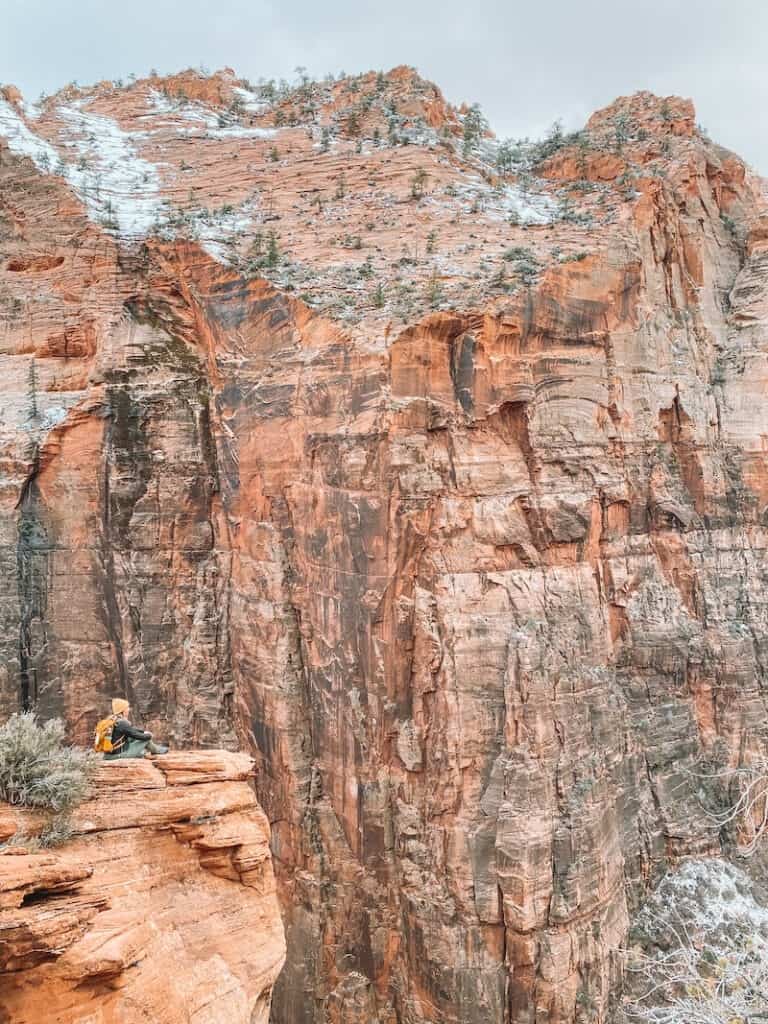
The Best Time to Visit Zion National Park
Zion National Park is open all year. During summer, expect scorching hot temperatures and big crowds. The shoulder seasons of Spring and Fall are my favorite times to visit Zion. There are far fewer visitors and generally mild weather.
Spring in Zion National Park (March – April)
Spring is a popular time to visit Zion. Crowds are especially large during spring break when kids are out of school. Daytime temperatures are in the 60s and 70’s nighttime lows in the 30s.
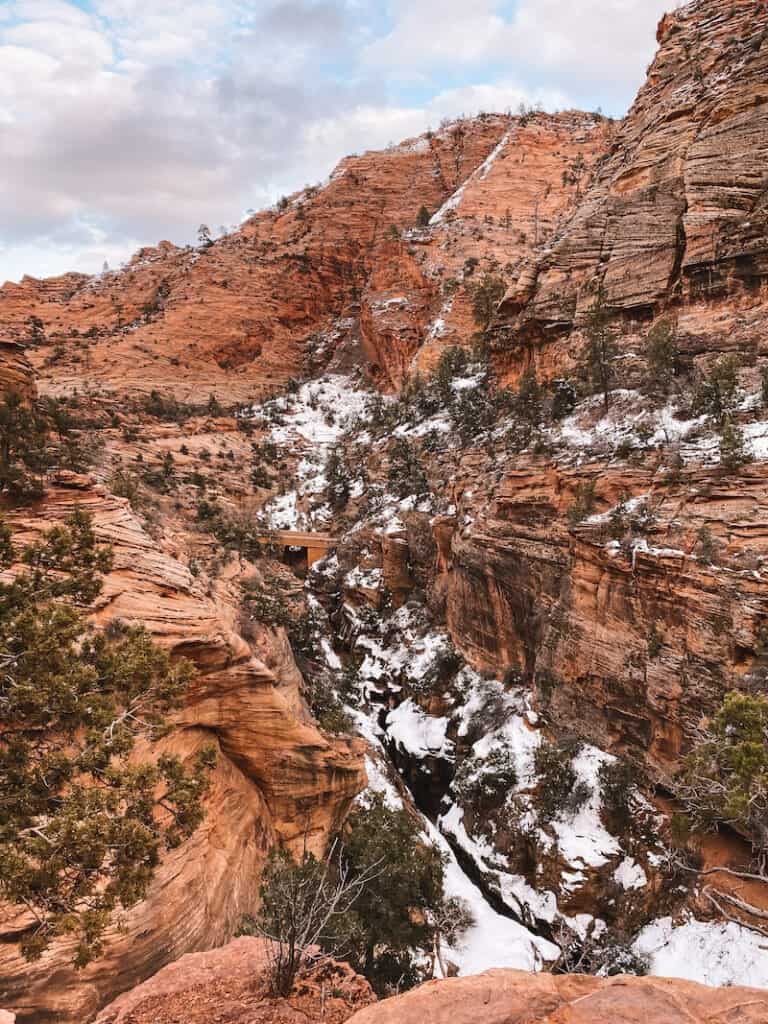
Snow and ice are still possible well into spring. When we visited in March we experienced a full snowstorm and ice on Angel’s Landing!
The Zion Canyon shuttle resumes operations in spring, which means you will not be able to drive your own car on Zion Canyon Scenic Drive.
Be aware, that you may not be able to hike the Narrows in spring. Water levels on the Virgin River can get very high. The Park service closes the canyon when the river flow is over 150 cubic feet per second, or when there is a flash flood warning.
If you do plan on hiking the Narrows in spring, be sure to visit one of the outfitters in Springdale to rent waders and canyoneering boots with waterproof socks to keep dry in the cold, deep water.
Summer in Zion National Park (May – September)
Summer is the most popular time to visit Zion National Park. That means you’ll need to book lodging, rental cars, and other reservations as far in advance as possible.
If you plan on visiting Zion between and early September, prepare for VERY hot temperatures and lots of crowds.
During the day, temps regularly soar above 100, and fall to the70s at night. Make sure to stay hydrated and bring plenty of water on hikes.
Fall in Zion National Park (October – November)
Fall is my favorite time to visit Zion National Park. Daytime temperatures hover around a reasonable 60s, and nighttime temps dip down to the 30s. Visitor numbers also go down after Labor Day, so you’ll be able to enjoy the Park with far fewer crowds.
Fall is also the best time for hiking in Zion. Water levels in the Narrows are low after a long hot summer, and ice and snow haven’t yet settled on higher elevations like Angel’s Landing.
If you time it right, you’ll also get to see beautiful fall color on the trees in Zion Canyon.
Winter in Zion National Park (December – February)

Winter in Zion is a quiet and magical time. It can also be cold, wet, and icy. Temperatures range from the 50’s during the day, to below freezing at night.
The Zion Canyon shuttle generally does not run during winter. The Shuttle may run during the holidays, and between Christmas and New Years. When the shuttle is not running you can drive your car directly to the trailhead. But be aware, parking is very limited, so make sure to arrive early.
Ice and snow can cover most hiking trails during winter. Bring appropriate winter hiking gear and plenty of warm layers. Do not attempt Angel’s Landing when ice or snow is present. The Narrows will be very cold – make sure to bring or rent dry suits from nearby outfitters in Springdale.
More Things to Do in Zion National Park
If you have more time in Zion National Park, check out these longer Zion Itinerary guides, here! Zion is fascinating National Park with dozens of ways to explore. Here are some more of my favorite things to do in Zion National Park.
More Hikes in Zion
Looking for more easy hikes in Zion? Check out 7 Easy Family-Friendly Hikes in Zion National Park.
Emerald Pools Trail: Visit Zion’s most famous waterfalls on this extremely popular hike. The trail is paved until the Lower Emerald Pool. Kids (and adults) will love exploring the easy trail behind the waterfall. Continue up the rocky trail to the Middle and Upper Pools. Lower Emerald Pools is an easy 1.5 miles round trip. Middle and Upper Pools is a moderate 2.5 miles round trip.
2023 Update: The bridge to access the trail from Zion Lodge / Shuttle Stop #5 is closed indefinitely due to structural issues. Unfortunately, that means there are no easy ways to access this trail while the bridge is closed. To access the Lower Pools trail, bridge access is available from Shuttle Stop #4, Court of the Patriarchs, which adds 3 miles of moderate hiking, and Stop #6, the Grotto, which adds 2 miles of moderate hiking. Check trail updates, here.
Weeping Rock Trail: This short but sweet trail leads to Weeping Rock, a naturally occurring spring dripping from the canyon walls, as well as views of the Great White Throne formation. Weeping Rock is an easy 0.4 mile round trip hike.

Pa’rus Trail: This easy, paved trail follows the Virgin River from the Zion Visitor Center to the Canyon Junction intersection. The trail has great views of the Watchman formation and is an easy 3.2 miles round trip. This is the only trail in Zion where pets are allowed.
Observation Point: Climb through the narrow Echo Canyon to arguably the best view in Zion National Park on this strenuous hike. This 7-mile hike starts at the Weeping Rock trailhead and climbs a series of switchbacks to the East Rim Trail. After 2,650 feet of elevation gain, hikers are rewarded with incredible views looking down on Zion Canyon and Angel’s Landing.
East Rim Trail is closed until further notice due to a major rockfall. Observation Point can be accessed via a 7.0 mile round trip hike via the East Mesa Trail, located outside the National Park. A 4×4 vehicle is required to make it to the trailhead. East Zion Adventures offers a paid seasonal shuttle to the trailhead.
Canyoneering Classes
The Zion area is famous as one of the best canyoneering destinations in the world. There are hundreds of marked and unmarked routes within the Zion area to explore on an extended Zion itinerary, if you have the technical skills.
Not an experienced climber? Consider adding a canyoneering class to your Zion National Park itinerary. Several reputable guiding companies offer canyoneering skills classes from half-day introductions to multi-day courses
Zion Adventures offers skills classes and guided canyon trips. Zion Guru and Rock Odysseys (women-owned and operated!) also offer family-friendly and advanced canyoneering classes and guided trips in the area.
Visit Kolob Canyons
Located about 45 minutes north of Zion Canyon, the Kolob Canyons area is a stunning but seldom visited area of the Park. In fact, only a tiny fraction of visitors to Zion ever make it to the Kolob Canyons District. Drive the 5 mile scenic drive, or take a hike on one of the several trails like Taylor Canyon (5 miles) that lead into a narrow box canyon to a double sandstone arch.
Visit More National Parks
National Parks: 15 Tips for Planning An Epic National Parks Road Trip
Big Bend: Epic Big Bend Itinerary Guide
Cuyahoga Valley: 17 Best Things to Do in Cuyahoga Valley National Park
Great Smoky Mountains: The Ultimate Great Smoky Mountains Itinerary in 2 Days
Joshua Tree: The Perfect Day Trip to Joshua Tree National Park
New River Gorge: The Best Hikes in New River Gorge National Park
Yosemite: Epic Yosemite 2 Day Itinerary – How to Spend 2 Perfect Days in Yosemite
National Parks: Get the Ultimate National Parks Planning Guide (for free!) sent to your inbox, full of important planning information, printable packing lists, and the best things to do in all 63 National Parks.
